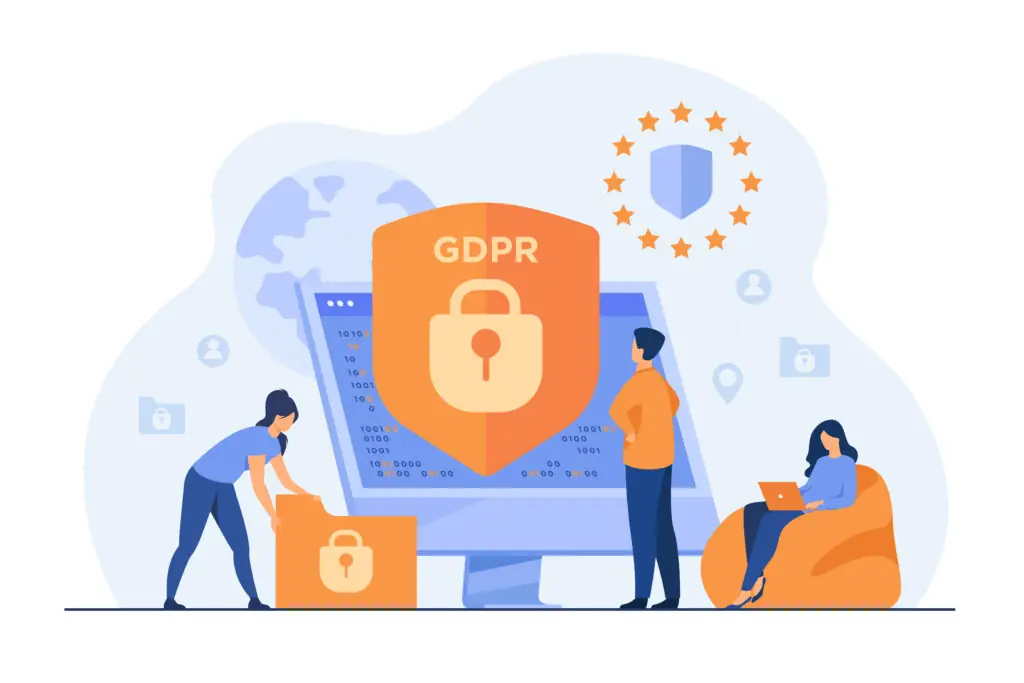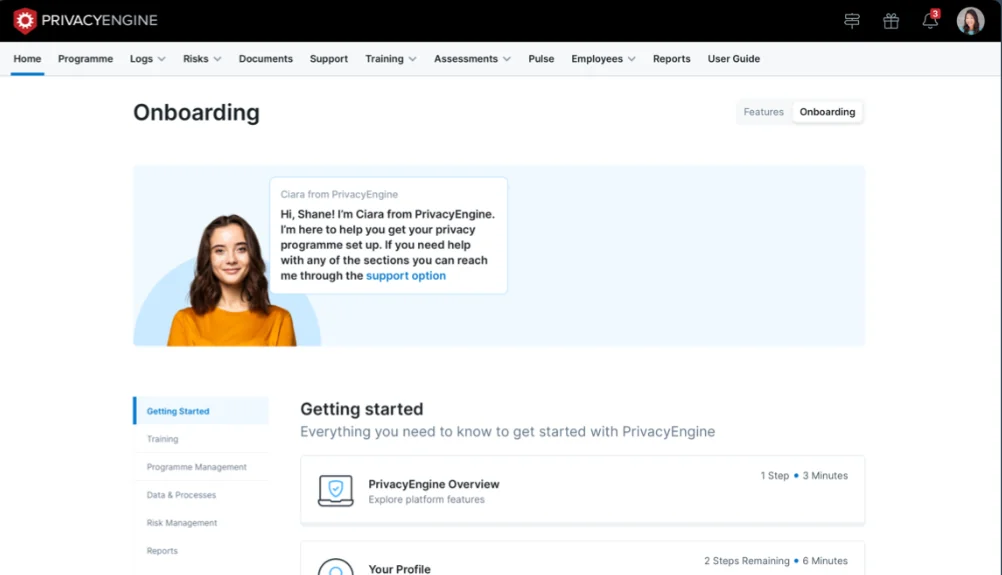In today’s increasingly digital world, protecting the privacy and security of personal data is more important than ever before. The General Data Protection Regulation (GDPR) is a set of regulations that aim to enhance data protection and privacy for individuals within the European Union (EU). Businesses that process or handle personal data of EU citizens are required to comply with the GDPR.
Understanding Gap Analysis
Before delving into the specifics of using gap analysis to achieve GDPR compliance, it is important to grasp the concept of gap analysis itself. Gap analysis is a technique used to assess the difference between the current state of a system or process and the desired state. In the context of GDPR compliance, gap analysis helps organizations identify the gaps in their data protection measures and determine the steps necessary to bridge those gaps.
Gap analysis is a comprehensive process that involves evaluating existing practices, policies, and procedures against the requirements set forth by the General Data Protection Regulation (GDPR). By conducting a thorough analysis, businesses can gain insight into areas where they fall short in terms of data protection. This process is vital for achieving GDPR compliance, as it highlights the specific actions required to meet the regulatory requirements.
Definition and Importance of Gap Analysis
Gap analysis, in the context of GDPR compliance, plays a crucial role in helping organizations understand the extent to which they comply with the data protection requirements. It involves a systematic examination of the organization’s current practices and procedures, comparing them to the GDPR’s standards, and identifying any gaps that need to be addressed.
By conducting a gap analysis, businesses can gain a clear understanding of their current data protection practices and identify areas where improvements are needed. This process allows organizations to take a proactive approach to GDPR compliance, ensuring that they are adequately protecting personal data and minimizing the risk of non-compliance.
Key Components of Gap Analysis
When conducting a gap analysis for GDPR compliance, businesses should consider several key components:
- Evaluating data processing practices and procedures: This involves assessing how personal data is collected, stored, and processed within the organization. It includes reviewing data handling practices, data retention policies, and data transfer mechanisms.
- Assessing technical and organizational measures: This component focuses on evaluating the security measures in place to protect personal data. It includes assessing the effectiveness of access controls, encryption methods, and incident response procedures.
- Reviewing privacy policies and consent mechanisms: Organizations need to ensure that their privacy policies are transparent, easily accessible, and compliant with GDPR requirements. This component involves reviewing privacy notices, consent forms, and mechanisms for obtaining and managing consent.
- Examining data breach response plans: In the event of a data breach, organizations must have effective response plans in place. This component involves reviewing incident response procedures, breach notification processes, and communication strategies.
By thoroughly examining these components, organizations can identify areas where improvements are needed to align with GDPR requirements. This comprehensive analysis enables businesses to develop a roadmap for achieving compliance, outlining the specific actions and measures that need to be implemented.
The Intersection of Gap Analysis and GDPR
Gap analysis and GDPR compliance go hand in hand. The General Data Protection Regulation (GDPR) sets out specific obligations and responsibilities for businesses when it comes to protecting personal data. Meeting these requirements requires a systematic and structured approach, and gap analysis provides a framework for achieving this.
Gap analysis is a process that involves assessing the current state of an organization’s data protection practices and identifying any gaps or areas of non-compliance with the GDPR. It involves comparing the organization’s existing policies, procedures, and technical measures against the requirements set out in the GDPR. By conducting a thorough analysis, organizations can identify weaknesses in their data protection practices and prioritize necessary improvements.
The GDPR lays out guidelines for collecting, processing, and storing personal data. It requires organizations to obtain explicit consent from individuals, implement proper data security measures, and provide transparency regarding data processing activities. Non-compliance can result in steep fines and damage to a company’s reputation.
One of the key aspects of GDPR compliance is the need for organizations to obtain explicit consent from individuals before collecting and processing their personal data. This means that organizations must clearly explain to individuals what data will be collected, how it will be used, and for what purposes. They must also provide individuals with the option to withdraw their consent at any time.
Data security is another critical element of GDPR compliance. The regulation requires organizations to implement appropriate technical and organizational measures to protect personal data against unauthorized access, disclosure, alteration, and destruction. This includes measures such as encryption, access controls, regular security assessments, and employee training.
Transparency is also a fundamental principle of the GDPR. Organizations must provide individuals with clear and concise information about their data processing activities, including the purposes for which the data is being processed, the legal basis for processing, and the rights of individuals in relation to their data. This information must be provided in a transparent and easily accessible manner, such as through a privacy policy or notice.
By conducting a gap analysis, organizations can identify any areas where they are falling short of these requirements and take the necessary steps to address them. This proactive approach ensures that businesses can align their processes with GDPR requirements and minimize the risk of non-compliance.
In conclusion, gap analysis plays a crucial role in helping organizations achieve GDPR compliance. By conducting a thorough analysis of their data protection practices, organizations can identify any gaps or areas of non-compliance and prioritize the necessary improvements. This proactive approach not only helps organizations meet their legal obligations under the GDPR but also enhances data protection and builds trust with individuals whose data they process.
Steps to Conduct a GDPR Gap Analysis
Conducting a successful gap analysis requires a structured approach. Here are the key steps to guide businesses in achieving GDPR compliance:
Identifying Current Data Protection Measures
The first step in conducting a gap analysis is to assess the existing data protection measures already in place within the organization. This includes evaluating policies, procedures, and technical measures related to data security. It is essential to have a comprehensive understanding of the organization’s current state before any improvements can be made.
During this step, it is important to gather information about the organization’s data handling practices, such as how data is collected, stored, and processed. This includes examining the security measures in place, such as encryption and access controls, to ensure that personal data is adequately protected.
Furthermore, it is crucial to assess the organization’s data governance practices, including data retention and disposal policies. This helps identify any areas where the organization may be retaining personal data for longer than necessary or not disposing of it securely.
Defining Desired GDPR Compliance Level
Once the current state is understood, the next step is to define the desired level of GDPR compliance. This involves analyzing the specific requirements of the regulation and mapping them to the organization’s practices. By clearly defining the expected level of compliance, businesses can establish a benchmark against which they can measure their progress.
During this step, organizations should consider the principles of GDPR, such as transparency, accountability, and data minimization. They should also assess the rights of data subjects, including the right to access, rectify, and erase their personal data. By aligning their practices with these principles and rights, organizations can ensure that they are meeting the core requirements of the GDPR.
Furthermore, organizations should also consider the legal basis for processing personal data, such as consent or legitimate interests. They should review their data processing activities to ensure that they have a valid legal basis for each processing operation.
Analyzing the Gap and Developing an Action Plan
With the current state and desired compliance level defined, the next step is to conduct a gap analysis. This involves comparing the existing data protection measures with the requirements of the GDPR and identifying any gaps or shortcomings. Based on this analysis, an action plan can be developed to address the identified gaps and bring the organization closer to GDPR compliance.
During the gap analysis, organizations should consider both technical and organizational measures. This includes assessing the effectiveness of their IT systems and infrastructure in protecting personal data. It also involves evaluating the organization’s internal controls, training programs, and data breach response procedures.
Based on the findings of the gap analysis, organizations can develop an action plan that outlines the steps needed to achieve GDPR compliance. This may include implementing new security measures, updating policies and procedures, conducting employee training, or engaging external consultants for assistance.
It is important to note that GDPR compliance is an ongoing process, and organizations should regularly review and update their data protection measures to ensure continued compliance. Conducting regular gap analyses can help organizations identify any new gaps or changes in the regulatory landscape that may require further action.
Benefits of GDPR Gap Analysis for Businesses
Conducting a gap analysis for GDPR compliance offers several important benefits for businesses. These include:
Enhanced Data Protection
By identifying gaps and implementing necessary changes, businesses can significantly enhance their data protection measures. This helps to safeguard the personal data of individuals, building trust and confidence in the organization.
For example, implementing encryption protocols for sensitive data can provide an additional layer of security. Conducting regular vulnerability assessments and penetration testing can help identify potential weaknesses in the system, allowing businesses to address them promptly and effectively.
Furthermore, conducting a thorough gap analysis can lead to the implementation of robust access controls, ensuring that only authorized personnel have access to sensitive data. This reduces the risk of unauthorized access and potential data breaches.
Avoidance of Non-Compliance Penalties
Non-compliance with the GDPR can result in substantial fines. Conducting a gap analysis allows businesses to pinpoint areas of non-compliance and take corrective action before any penalties are imposed.
For instance, through a comprehensive gap analysis, businesses can identify any gaps in their consent management processes. This enables them to ensure that they have obtained valid consent from individuals for processing their personal data, thus avoiding potential penalties for non-compliance.
In addition, a gap analysis can help businesses identify any shortcomings in their data breach notification procedures. By rectifying these gaps, organizations can ensure timely and accurate reporting of data breaches, thereby reducing the risk of penalties for non-compliance.
Improved Business Reputation
Data breaches and non-compliance incidents can severely damage a business’s reputation. By proactively conducting a gap analysis and achieving GDPR compliance, organizations demonstrate their commitment to protecting personal data and maintaining high ethical standards.
By implementing the necessary changes identified through a gap analysis, businesses can showcase their dedication to data privacy and security. This can enhance their reputation among customers, partners, and stakeholders, establishing them as trustworthy and reliable organizations.
Moreover, achieving GDPR compliance through a comprehensive gap analysis can also help businesses attract new customers who prioritize data protection and privacy. By demonstrating their commitment to compliance, organizations can differentiate themselves from competitors and gain a competitive advantage in the market.
Common Challenges in GDPR Gap Analysis and Solutions
While conducting a gap analysis is essential for GDPR compliance, businesses often face challenges along the way. Here are some common challenges and their corresponding solutions:
Overcoming Data Management Issues
Data management can be complex, especially for organizations processing large volumes of personal data. Implementing robust data management systems and protocols, such as data encryption and access controls, can help overcome these challenges and ensure compliance with GDPR requirements.
One specific data management challenge that businesses often encounter is the need to handle data subject access requests (DSARs). DSARs allow individuals to request access to their personal data held by an organization. To address this challenge, businesses can establish streamlined processes and dedicated teams to handle DSARs efficiently. This may involve implementing automated systems to track and respond to requests promptly, ensuring compliance with GDPR’s strict timelines.
In addition to DSARs, businesses must also address data retention and deletion. GDPR requires organizations to retain personal data only for as long as necessary and to delete it when no longer needed. Developing clear data retention policies and implementing automated processes to identify and delete expired data can help businesses meet these requirements effectively.
Addressing Lack of GDPR Knowledge
Many businesses struggle to fully understand the intricacies of the GDPR. It is crucial to invest in employee training and education to ensure a comprehensive understanding of the regulation. Engaging legal professionals or data protection experts can also provide valuable guidance in navigating the complexities of GDPR compliance.
Furthermore, staying up to date with GDPR developments is essential. The regulation is continuously evolving, and businesses must adapt their compliance strategies accordingly. Subscribing to industry newsletters, attending conferences, and participating in GDPR-focused webinars can help organizations stay informed about the latest changes and best practices.
Another challenge related to GDPR knowledge is ensuring compliance when working with third-party vendors or partners. Businesses must ensure that their vendors also comply with GDPR requirements. This can be achieved by conducting due diligence assessments, reviewing vendor contracts, and implementing data processing agreements that clearly outline the responsibilities and obligations of each party.
Dealing with Resource Constraints
Some organizations may face resource constraints, making GDPR compliance a challenging endeavor. However, prioritizing data protection and allocating resources accordingly can help overcome these limitations. Additionally, outsourcing certain aspects of compliance, such as data security audits, can provide expert support without placing excessive strain on internal resources.
When dealing with resource constraints, organizations can also consider leveraging technology solutions to streamline GDPR compliance efforts. Implementing data protection software, such as data classification tools or privacy management platforms, can automate certain compliance tasks and reduce the manual workload. This allows businesses to optimize their resource allocation and focus on critical areas that require human expertise.
Furthermore, establishing cross-functional teams or committees dedicated to GDPR compliance can help organizations leverage existing resources effectively. By involving representatives from different departments, such as legal, IT, and HR, businesses can tap into a diverse range of skills and knowledge to address compliance challenges collaboratively.
Expanding on these solutions and tailoring them to the specific needs of each organization can significantly enhance the effectiveness of GDPR gap analysis and compliance efforts.
Continuous Improvement and Monitoring
Importance of Regular Gap Analysis
GDPR compliance is not a one-time effort but an ongoing process. Regular gap analysis allows businesses to continuously monitor and improve their data protection measures. By conducting periodic assessments, organizations can stay ahead of emerging threats and adapt their practices to evolving regulatory requirements.
Tools for Ongoing GDPR Compliance Monitoring
Various tools and technologies are available to assist businesses in monitoring their GDPR compliance. These include data protection software, automated audit tools, and data breach detection systems. Leveraging these tools can streamline compliance monitoring and provide valuable insights for continuous improvement.
Conclusion
Achieving GDPR compliance is a critical undertaking for businesses that handle personal data. Gap analysis serves as a valuable tool in this process, enabling organizations to identify and address gaps in their data protection practices. By diligently conducting gap analysis, businesses can enhance data protection, avoid penalties, and maintain a positive reputation. Ongoing monitoring and continuous improvement further ensure long-term GDPR compliance, benefiting both the organization and individuals whose data is being protected.




